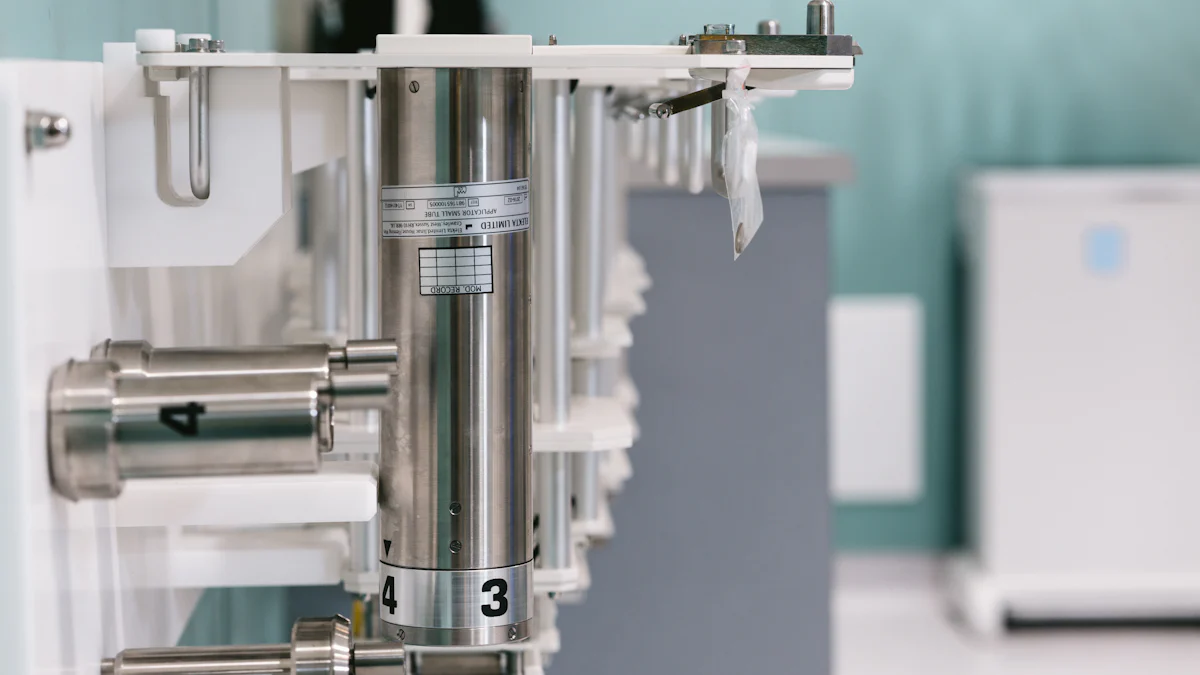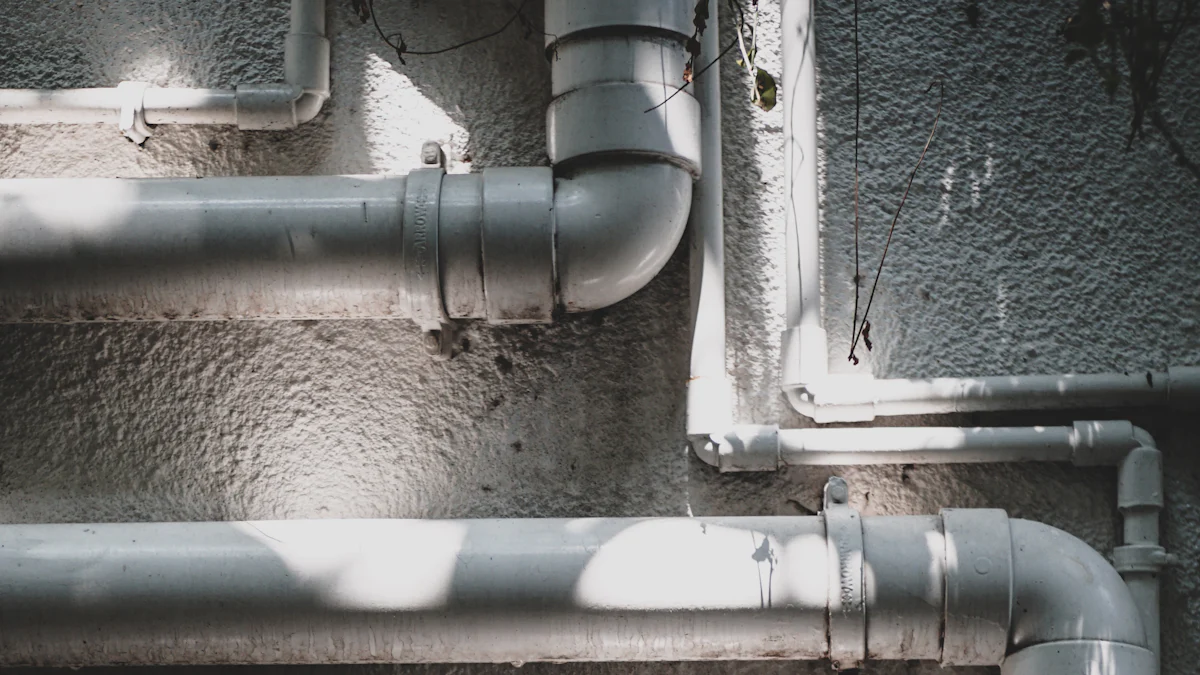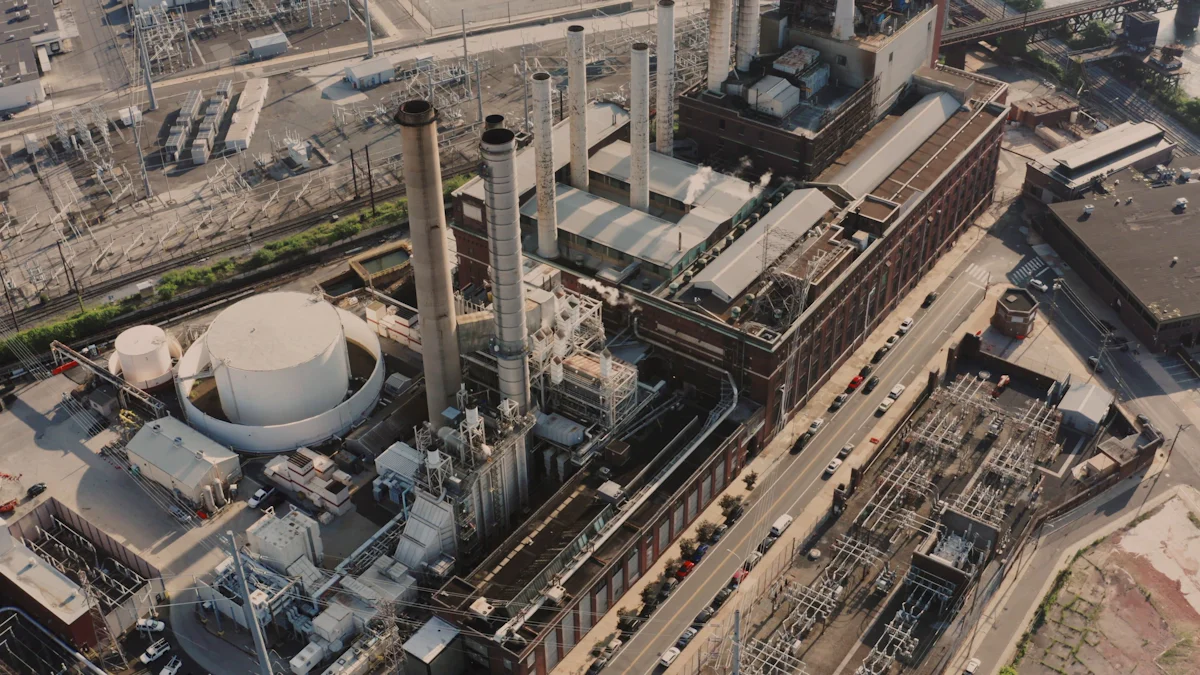
Epitaxy refers to the process of growing a crystalline layer on a substrate. This technique plays a vital role in creating high-quality materials for advanced technologies. An epi reactor serves as the essential tool that enables this process. It provides the controlled environment needed for precise layer growth, which is critical in applications like semiconductors and electronics. Understanding each epi reactor component helps you grasp how these systems work and why they are indispensable in modern manufacturing.
要点
- Epitaxy is essential for creating high-quality materials used in semiconductors and electronics, ensuring precision in layer growth.
- An epi reactor provides a controlled environment, allowing for precise adjustments in temperature, gas flow, and pressure to achieve optimal results.
- Key components of an epi reactor, such as the reactor chamber and gas delivery system, work together to ensure uniform and defect-free crystalline layers.
- Temperature control is critical; even minor fluctuations can lead to defects, making reliable heating systems vital for quality assurance.
- The substrate holder ensures proper alignment and stability during the epitaxy process, promoting even gas distribution and layer growth.
- Modern epi reactors utilize automated control systems to monitor and adjust parameters in real time, enhancing efficiency and reducing human error.
- Understanding the components of an epi reactor demystifies the epitaxy process and highlights its significance in advancing technology.
What Is an Epi Reactor System?
Understanding Epitaxy
What is epitaxy, and why is it important?
Epitaxy is the process of growing a thin crystalline layer on a substrate. This layer mimics the crystal structure of the substrate, creating a seamless and uniform material. You can think of it as building a second layer of bricks that perfectly aligns with the foundation below. This precision makes epitaxy essential for producing high-quality materials.
Epitaxy matters because it enables the creation of advanced materials with specific properties. These materials are critical in industries like semiconductors, where even the smallest imperfections can affect performance. By using epitaxy, you ensure that the layers are pure, defect-free, and tailored for their intended purpose.
Applications of epitaxy in modern technology
Epitaxy plays a key role in many modern technologies. In the semiconductor industry, it helps create the layers needed for microchips, transistors, and diodes. These components power your smartphones, computers, and other electronic devices. Epitaxy also supports the development of optoelectronic devices like LEDs and lasers, which are vital in communication and lighting.
In renewable energy, epitaxy contributes to the production of efficient photovoltaic cells for solar panels. It also aids in fabricating high-speed electronic components used in 5G networks and advanced computing. Without epitaxy, many of these innovations would not exist.
The Purpose of an Epi Reactor
How an epi reactor facilitates epitaxy
An epi reactor provides the controlled environment required for epitaxy. It ensures that the conditions inside the system remain stable and precise. You can control factors like temperature, gas flow, and pressure to achieve the desired results. This level of control allows you to grow thin films with exceptional accuracy.
The reactor introduces specific gases or materials into its chamber. These substances react and deposit onto the substrate, forming the crystalline layer. Each epi reactor component, such as the gas delivery system and heating system, works together to maintain the ideal conditions for this process.
The importance of precision and control in the process
Precision and control are crucial in epitaxy. Even a slight variation in temperature or gas flow can lead to defects in the crystalline layer. These defects can compromise the performance of the final product. By using an epi reactor, you minimize these risks and ensure consistent quality.
Control also allows you to customize the properties of the material. You can adjust parameters to create layers with specific thicknesses, compositions, or electrical characteristics. This flexibility makes epitaxy a versatile tool for developing cutting-edge technologies.
Key Epi Reactor Components

Reactor Chamber
Function of the reactor chamber
The reactor chamber serves as the core of an epi reactor system. It provides the controlled environment necessary for epitaxy to occur. Inside the chamber, the substrate is placed, and the chemical reactions take place to form the crystalline layer. This component ensures that external factors like air or moisture do not interfere with the process. By maintaining a sealed and stable environment, the reactor chamber allows you to achieve precise and consistent results.
Materials used to withstand high temperatures and chemicals
The reactor chamber must endure extreme conditions. High temperatures and exposure to reactive chemicals are common during epitaxy. To handle these challenges, manufacturers use materials like quartz, graphite, or stainless steel to construct the chamber. Quartz resists thermal shock, while graphite provides excellent heat resistance. Stainless steel offers durability and chemical resistance. These materials ensure the chamber remains reliable and safe throughout the process.
Gas Delivery System
Introduction of gases into the reactor
The gas delivery system introduces the necessary gases into the reactor chamber. These gases act as the building blocks for the crystalline layer. The system precisely controls the flow rate and composition of the gases to match the requirements of the epitaxy process. You can adjust the gas flow to create specific material properties, ensuring the final product meets your needs.
Role of precursors in the epitaxy process
Precursors are the chemical compounds introduced into the reactor through the gas delivery system. These compounds react on the substrate’s surface to form the crystalline layer. For example, in metal-organic vapor phase epitaxy (MOVPE), metal-organic precursors combine with other gases to deposit thin films. The choice of precursors directly impacts the quality and characteristics of the layer. By selecting the right precursors, you can tailor the material for various applications.
Heating System
Importance of temperature control
Temperature control is critical in epitaxy. The heating system ensures the substrate and gases reach the optimal temperature for the chemical reactions to occur. Precise temperature regulation prevents defects in the crystalline layer. Even minor fluctuations can affect the uniformity and quality of the material. A reliable heating system helps you maintain the consistency needed for high-performance products.
Types of heating systems used in epi reactors
Epi reactors use different types of heating systems based on the application. Resistance heating involves passing an electric current through a material to generate heat. Induction heating uses electromagnetic fields to heat the substrate indirectly. Radiant heating relies on infrared lamps to provide uniform heat distribution. Each method offers unique advantages, allowing you to choose the best option for your specific needs.
Substrate Holder
Positioning the substrate during epitaxy
The substrate holder plays a crucial role in the epi reactor system. It securely positions the substrate within the reactor chamber, ensuring it remains stable throughout the epitaxy process. Proper positioning is essential because it allows the substrate to interact evenly with the gases introduced into the chamber. This interaction ensures that the crystalline layer grows uniformly across the entire surface. Without a reliable substrate holder, achieving consistent results would be nearly impossible.
Manufacturers design substrate holders to accommodate various substrate sizes and shapes. This flexibility allows you to use the same epi reactor for different applications. The holder must also withstand high temperatures and chemical exposure, making its material selection critical for durability and performance.
Ensuring uniformity in layer growth
Uniformity in layer growth is vital for producing high-quality materials. The substrate holder ensures this by maintaining the substrate’s position and orientation during the process. Any misalignment can lead to uneven deposition, which affects the material’s properties and performance. A well-designed holder minimizes these risks by keeping the substrate perfectly aligned.
Some advanced substrate holders incorporate rotation mechanisms. These mechanisms rotate the substrate during epitaxy, promoting even gas distribution and improving layer uniformity. This feature is especially useful when working with larger substrates or complex material compositions. By ensuring uniform growth, the substrate holder contributes significantly to the overall success of the epitaxy process.
Exhaust System
Removing waste gases safely
The exhaust system is another critical epi reactor component. It removes waste gases generated during the epitaxy process, ensuring the reactor chamber remains clean and functional. These waste gases often include byproducts of chemical reactions and unused precursors. If not removed promptly, they can interfere with the growth process and compromise the quality of the crystalline layer.
A well-functioning exhaust system protects you and the environment from harmful emissions. It directs the waste gases away from the reactor chamber and into a safe disposal system. This ensures that the workspace remains safe and free from contamination.
Environmental compliance and safety measures
Modern exhaust systems are designed with environmental compliance in mind. They include features like gas scrubbers and filters to neutralize harmful substances before releasing them into the atmosphere. These measures help you meet regulatory standards and reduce the environmental impact of your operations.
Safety is another key consideration. The exhaust system prevents the buildup of flammable or toxic gases within the reactor chamber. This reduces the risk of accidents and ensures a safe working environment. By prioritizing safety and compliance, the exhaust system supports both the efficiency and sustainability of the epitaxy process.
Control Systems
Monitoring and adjusting parameters like temperature and gas flow
Control systems are the brain of the epi reactor. They monitor and adjust critical parameters like temperature, gas flow, and pressure to ensure optimal conditions for epitaxy. These systems use sensors to collect real-time data from the reactor chamber. You can use this data to make precise adjustments and maintain stability throughout the process.
Accurate control is essential for achieving consistent results. Even minor deviations in temperature or gas flow can affect the quality of the crystalline layer. The control system helps you avoid these issues by providing a high level of precision. This ensures that each layer meets the required specifications.
Automation in modern epi reactors
Automation has revolutionized the way epi reactors operate. Modern control systems use advanced algorithms to automate many aspects of the epitaxy process. This reduces the need for manual intervention and minimizes the risk of human error. Automated systems can adjust parameters in real time, responding quickly to any changes in the reactor environment.
Automation also improves efficiency. It allows you to run multiple processes simultaneously, saving time and resources. Additionally, automated control systems often include user-friendly interfaces, making it easier for you to monitor and manage the reactor. By integrating automation, modern epi reactors deliver higher precision, reliability, and productivity.
How Epi Reactor Components Work Together

The Epitaxy Process
Preparing the substrate and loading it into the reactor
The epitaxy process begins with preparing the substrate. You must clean the substrate thoroughly to remove any impurities or contaminants. This step ensures that the crystalline layer adheres properly and grows without defects. Once cleaned, you load the substrate into the reactor chamber. The substrate holder secures it in place, maintaining its position for uniform layer growth. Proper alignment at this stage is critical for achieving high-quality results.
Introducing gases and initiating the reaction
After loading the substrate, you introduce the necessary gases into the reactor chamber through the gas delivery system. These gases, often referred to as precursors, contain the chemical elements required for the crystalline layer. The heating system raises the temperature inside the chamber to the optimal level, triggering the chemical reactions. These reactions cause the precursors to deposit material onto the substrate, forming the thin crystalline layer. Precise control of gas flow and temperature ensures that the deposition occurs evenly across the substrate.
Monitoring and controlling the growth process
Throughout the epitaxy process, you must monitor and control key parameters like temperature, gas flow, and pressure. The control system collects real-time data from sensors inside the reactor chamber. This data allows you to make adjustments as needed, ensuring stable conditions. By maintaining precise control, you can prevent defects and achieve consistent layer growth. Automation in modern epi reactors simplifies this task, enabling you to focus on optimizing the final product.
Achieving Precision and Quality
How each component contributes to the final product
Each epi reactor component plays a vital role in achieving precision and quality. The reactor chamber provides a stable environment, shielding the process from external interference. The gas delivery system ensures the right materials reach the substrate in controlled amounts. The heating system maintains the exact temperature needed for chemical reactions. The substrate holder keeps the substrate aligned, promoting uniform growth. Finally, the exhaust system removes waste gases, keeping the chamber clean and functional. Together, these components create the conditions necessary for producing high-quality crystalline layers.
Overcoming challenges in maintaining uniformity
Maintaining uniformity in layer growth can be challenging. Variations in temperature, gas flow, or substrate positioning can lead to uneven deposition. To overcome these challenges, you must rely on the precision of the reactor’s components. For example, advanced substrate holders with rotation mechanisms help distribute gases evenly across the substrate. Automated control systems detect and correct deviations in real time, minimizing errors. By addressing these challenges, you can ensure that the final product meets the highest standards of quality.
Epitaxy plays a crucial role in shaping modern technology. It enables the creation of advanced materials used in semiconductors, optoelectronics, and renewable energy. By understanding the components of an epi reactor, you gain insight into how this intricate process works. Each part, from the reactor chamber to the control systems, contributes to achieving precision and quality.
Learning about these components helps you demystify epitaxy and appreciate its impact on innovation. Explore more about epitaxy to uncover its potential applications and deepen your knowledge of this fascinating field.
よくあるご質問
What is the primary purpose of an epi reactor?
An epi reactor creates a controlled environment for epitaxy. It ensures precise conditions like temperature, gas flow, and pressure to grow high-quality crystalline layers on substrates. This process is essential for producing materials used in semiconductors, optoelectronics, and other advanced technologies.
Why is temperature control so important in epitaxy?
Temperature control ensures that chemical reactions occur at the right rate. Even small temperature fluctuations can cause defects in the crystalline layer. A stable temperature helps you achieve uniformity and maintain the quality of the material.
What types of gases are used in the epitaxy process?
The gases used depend on the type of material you want to grow. Common gases include hydrogen, silane, and ammonia. These gases act as precursors, providing the chemical elements needed to form the crystalline layer.
How does the substrate holder improve layer uniformity?
The substrate holder keeps the substrate stable and aligned during the process. Some holders rotate the substrate to distribute gases evenly. This ensures that the crystalline layer grows uniformly across the entire surface.
What safety measures are in place for handling waste gases?
Modern epi reactors use exhaust systems with filters and scrubbers. These systems neutralize harmful substances before releasing them into the atmosphere. This protects both the environment and the workspace from contamination.
Can you automate the epitaxy process?
Yes, modern epi reactors often include automated control systems. These systems monitor parameters like temperature and gas flow in real time. Automation reduces human error and improves efficiency, making the process more reliable.
What materials are used to construct the reactor chamber?
Reactor chambers are made from materials like quartz, graphite, or stainless steel. Quartz resists thermal shock, graphite handles high temperatures, and stainless steel offers durability and chemical resistance.
How do you ensure the crystalline layer is defect-free?
You achieve defect-free layers by maintaining precise control over the process. This includes regulating temperature, gas flow, and substrate positioning. Advanced control systems and high-quality components help you minimize errors.
What industries benefit the most from epitaxy?
Epitaxy is crucial in the semiconductor industry for creating microchips, transistors, and diodes. It also supports optoelectronics, renewable energy, and high-speed communication technologies like 5G.
How can beginners learn more about epitaxy?
You can start by exploring educational resources like articles, videos, and technical guides. Visiting industry websites or attending workshops can also provide valuable insights. Hands-on experience with epi reactors offers the best learning opportunity.